| September 6, 2000
- Lima, Peru
Itinerary
I have an hour to kill before
I go to the airport. One thing I'll miss about Lima is all the excitement.
It truly is a fascinating place. I've noticed that when you eat at
a restaurant there really is not time to sit and talk. Once you put
your fork down a waiter comes and takes it away. They are very observant.
September 6, 2000 -
Arequipa, Peru
First of all I have to change
my mind on Lima. On the way to the airport we hit all the potholes
in the city. Some were so big a bus would get caught in it.
I finally know how to describe
Lima. Every place is built like a fortress. Huge walls with
barbed wire or spikes (irons) on top.
I saw the very poor on the
way to the airport. It really is quite sad. The filth (mostly
from pollution from the cars) is terrible. That is what makes the
buildings look so dirty. In Lima they do everything outdoors - change
oil, sell car part on the street - you name it. I am also sad to
report the number of dogs I saw running in the streets. Every single
male - either a stray or someone's pet - was still intact. Very sad
thing to see.
Got to the airport and had
to pay the $12.00 soles departure tax. You have to enter and exit
the plane on the tarmac. The plane was very roomy and I was lucky
enough to get a window seat.
The view from the airplane
was incredible. Flying East to Arequipa, the hills and mountains
just looked very barren. There must have been some vegetation, but
from the air you only saw little patches here and there.
The roads are incredible!
It looked as if someone had sprayed that silly string over the hills and
mountains to form the roads. They zig and zag every which way.
Amazing thing is that only a few mountains had snow on top, but not very much of it. And some of the rivers looked as if they sprung from the top
of a mountain and flowed down. It was very impressive.
So far my trip has been great.
I think I would enjoy it a little more if I was with an English crowd and
if I could speak Spanish. That is a definite must.
Arrived in Arequipa and it
was nice and warm. Much warmer than Lima. The first thing I
noticed was that the grass is yellow. It is a weird mixture of very
coarse grass. Also there are geraniums everywhere! Mom would
love it.
We drove to our hotel - Hotel
Libertator - which is located in the middle of a park. It is a very
nice hotel.
Arequipa is called the "White
City" as almost all the buildings are made from white volcanic rock.
There are three volcanic ranges around Arequipa and the most magnificent
is called Misti Volcano. They really look like mountains but I guess
this one is still active. It is magnificent in the skyline.
We had 15 minutes to drop
our stuff off in our rooms before heading out. At least I know I'm
getting my money's worth.
The roads are very, very
narrow compared to Lima and the drivers are even worse! Our tour
bus (a big one this time) driver was a mad man. Speeding through
the streets. I'm amazed we didn't have an accident. Here they
don't use their horns as much as Lima.
They still have the same
vehicles though - Daewoo's, Toyota, etc.
On our tour we first stopped
off at a beautiful vantage point. I hope my pictures turn out.
Misti is in the background and you can see how they work on terraces here.
It is really amazing what they can grow on these little terraces. Plus
the irrigation system - very sophisticated.
We drove to the city centre
and visited a few churches. Then we went to a convent. It is
amazing to see these grand buildings that are still standing after 400
years. This one convent was very interesting. The nuns came
to the location back in the 1500s. They built their convent like
a little town. Each nun had their own "house" which would consist
of a very large room with an alcove for their wood bed and their statue.
It was interesting how the nuns had no contact with the outside and lived
very self sufficient in their convent.
The way one became a nun
was also interesting. The first born daughter was promised to be
married when she was first born. The second born daughter was promised
to become a nun and serve God. The chosen girls were usually taken
at 12 years old. The families had to petition the nuns and pay a
dowry for them to be accepted. The convent only accepted eight new
nuns every four years. So the families had to petition hard.
Once these girls were accepted
to the convent they were placed in what they called cloisters - eight separated
rooms with one main square. The girls had to stay in the convent
for four years with absolutely no outside contact except for one nun who
would come and teach them for about two hours/day. After the four
years of solitude, they were brought into a small area and asked just one
question - "Do you want to be a nun?" Most of them said yes as they
knew that they would not have a life outside the convent.
As the nuns grew they would
make money and build their own homes or their families would build them
for them. Most nuns were from well off families so they also had
slaves. These slaves could come and go and they would do all the
cooking and cleaning for the nuns (usually they were the nun's nannies).
The nuns were too busy praying and repenting for the sins of the world.
It was a fascinating tour
and the walls were a meter to 3.5 meters thick - it depended on the height
of the walls. Only a few ceilings needed repair from earthquakes,
so about 90% of the convent is original. Nuns still live there and
the last time they added onto the convent was 1970.
Interesting, fascinating
and truly amazing.
We then drove around the
city centre to a few more churches. These are such grand structures
- both in and out.
One place we went to used
to be a monastery. And as with the nuns, the monks paid for their
own houses. These houses are now being "rented" out to local shops.
Today I made my first big
purchase. I bought a baby alpaca sweater. This design I've
never seen anywhere until now and through I better buy it as I doubt I'll
see another one like it. Baby alpaca is the softest wool in Peru (which is
affordable). Vicuna wool is softer but too pricy.
I paid $50 US ($175 soles) for it. My guide said that was a bit expensive
but because I could not bargain, it was not so bad.
My guides were very helpful
today. Because I am the only English speaking person I get my own
guide. They translate for me and answer all my questions. I
am so high end.
One guide did say that I
would be with an all English group later in my trip. |
 City view of Arequipa
City view of Arequipa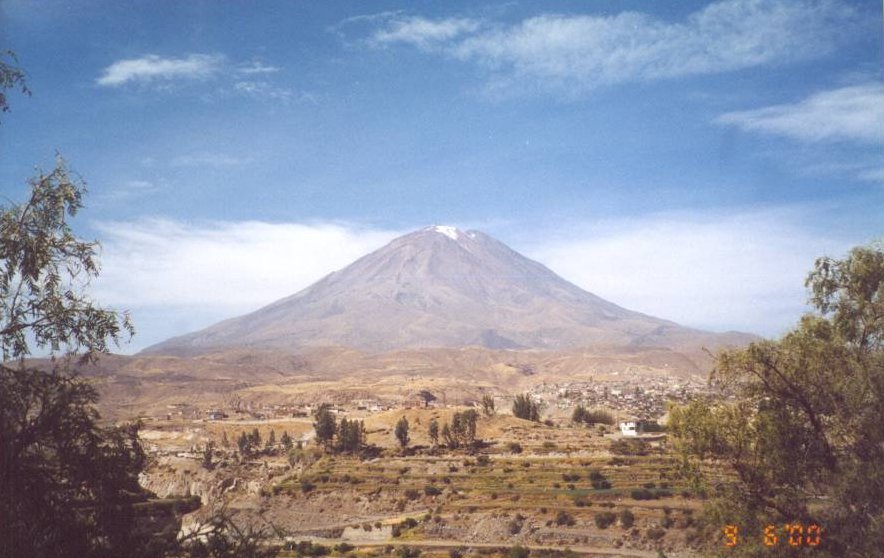 Misti Volcano - still active
Misti Volcano - still active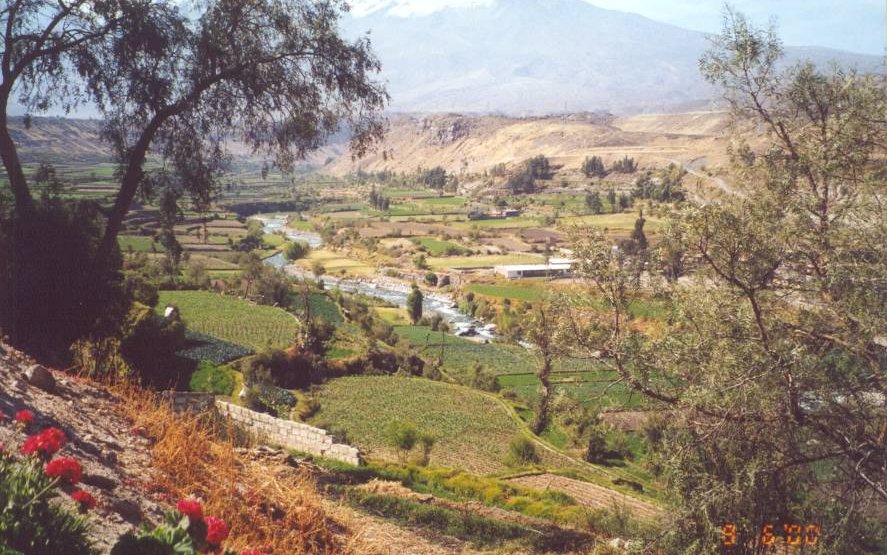 Terraces outside Arequipa
Terraces outside Arequipa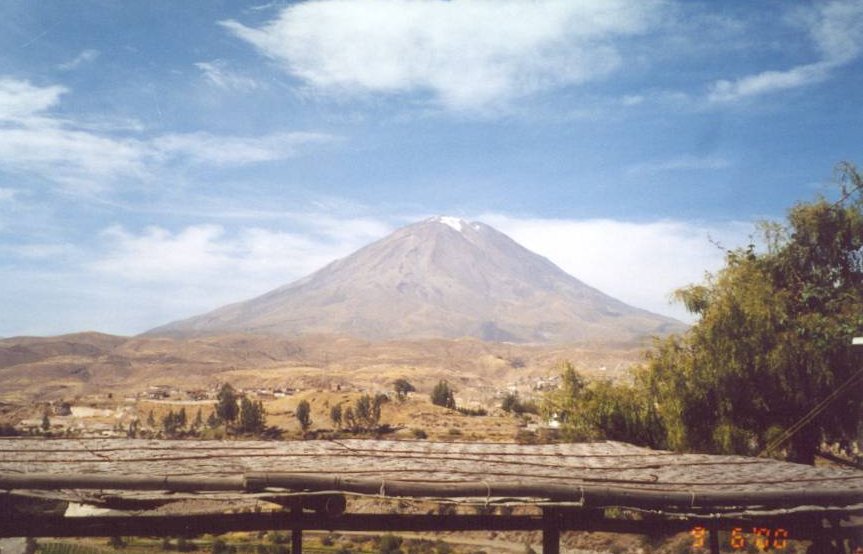 Misti Volcano - still active
Misti Volcano - still active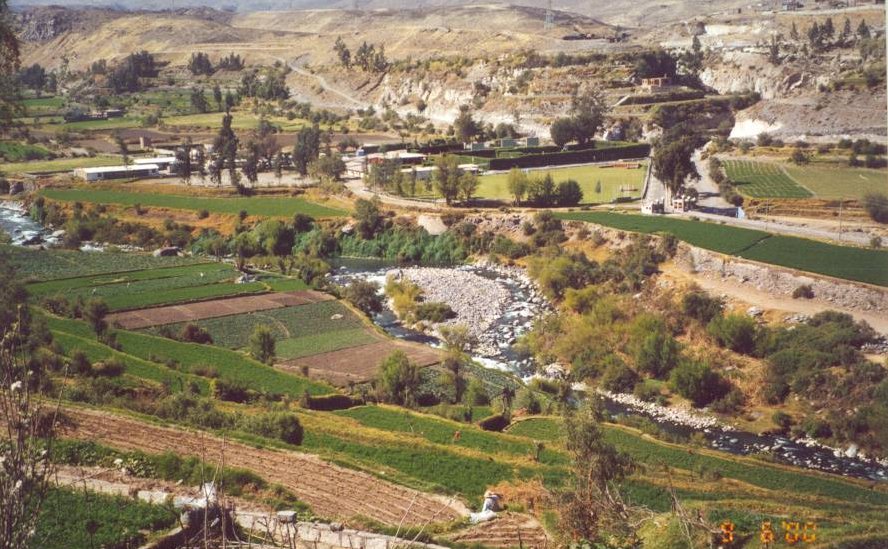 Terraces outside Arequipa
Terraces outside Arequipa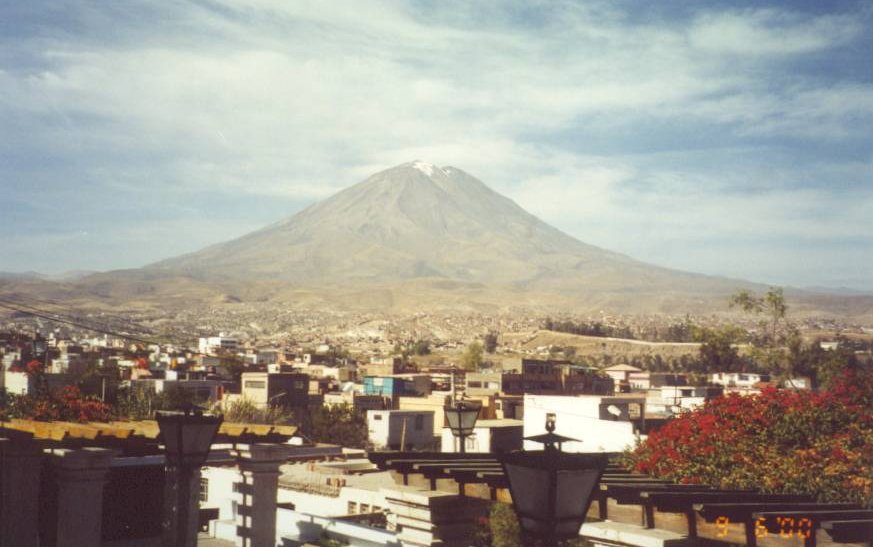 Misti Volcano - still active
Misti Volcano - still active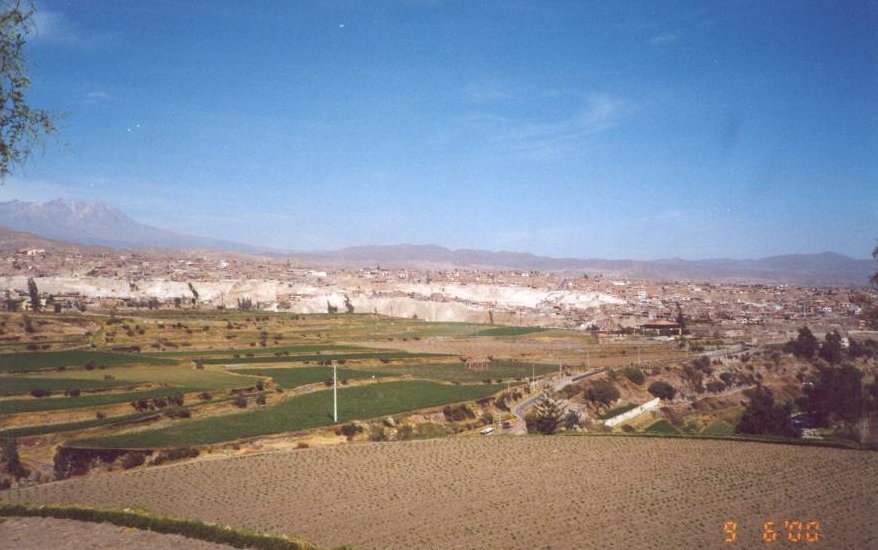 City view of Arequipa
City view of Arequipa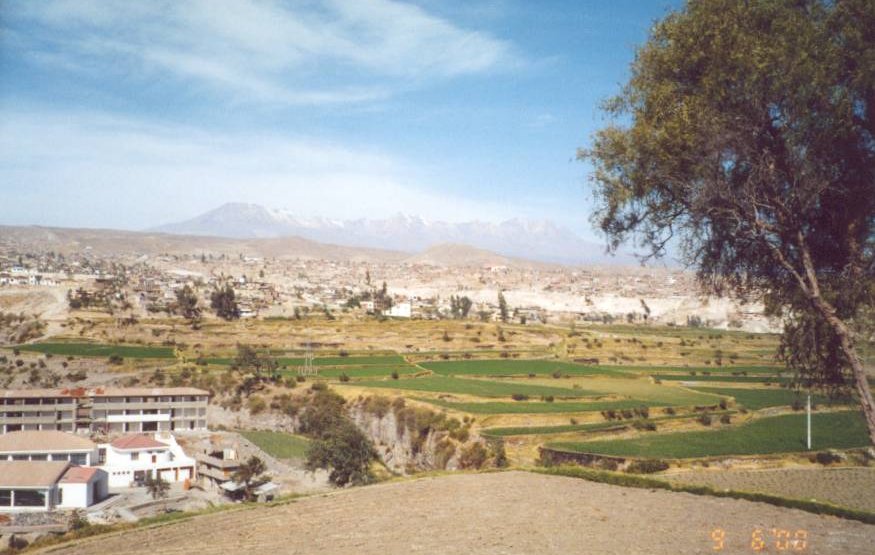 Pichu Pichu Volcano
Pichu Pichu Volcano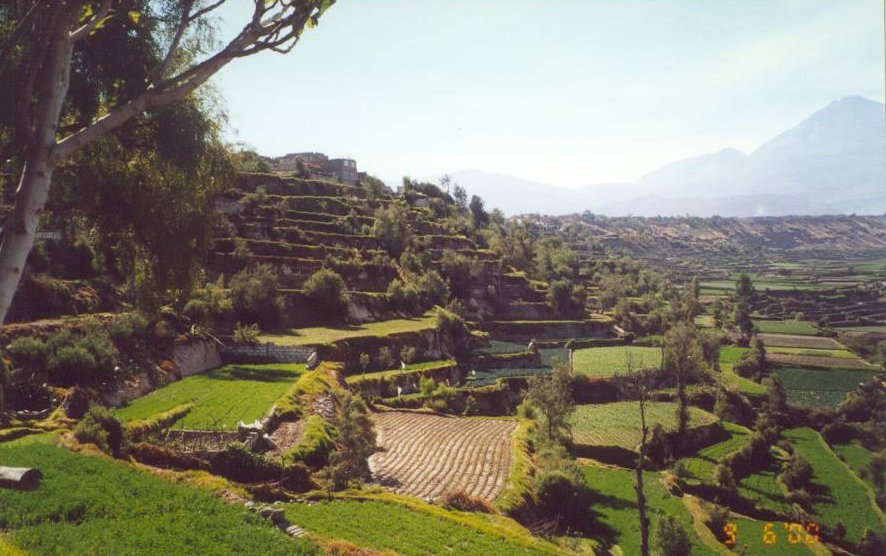 Terraces outside Arequipa
Terraces outside Arequipa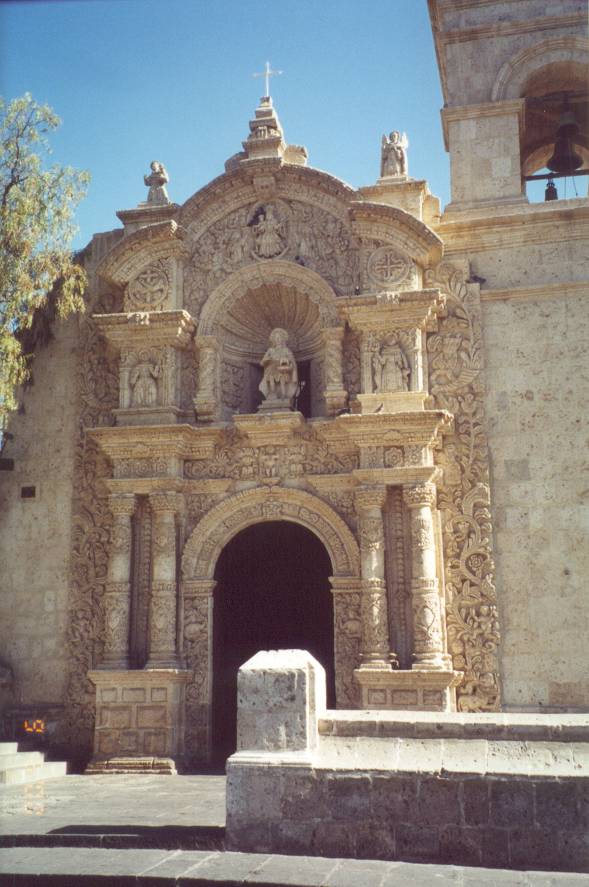 Church in Yanahuara
Church in Yanahuara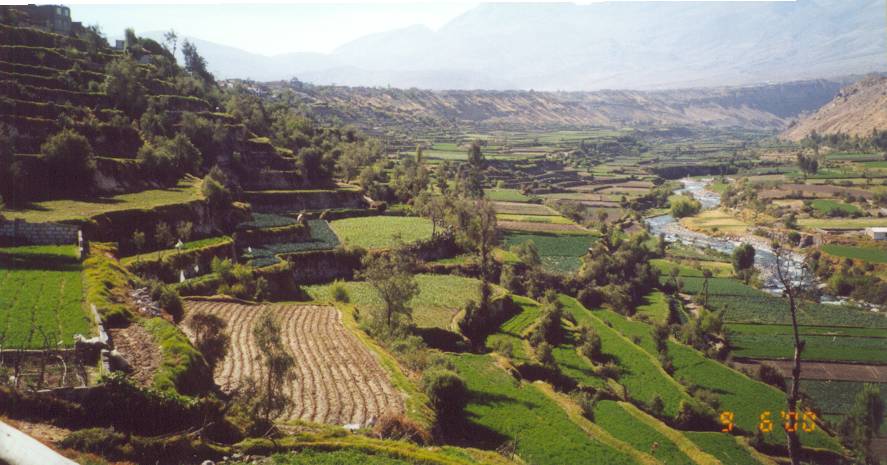 Terraces outside Arequipa
Terraces outside Arequipa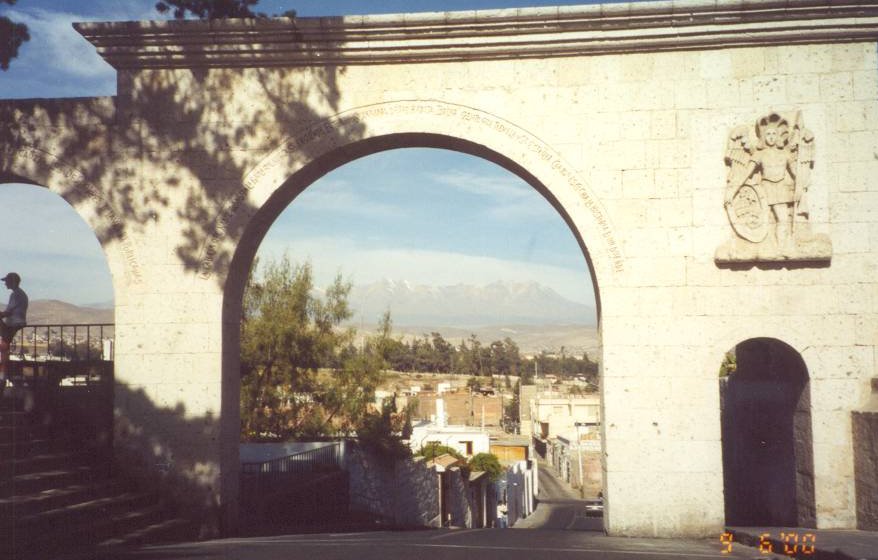 View of Arequipa from Yanahuara
View of Arequipa from Yanahuara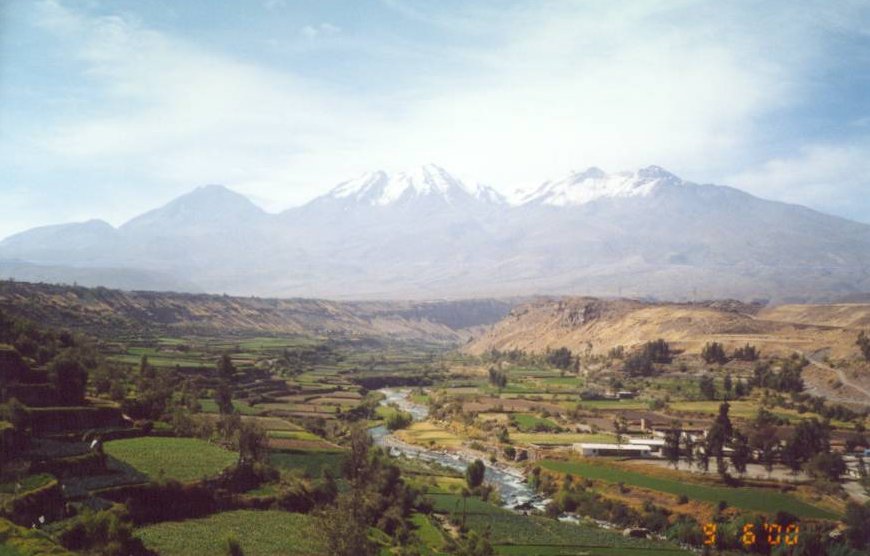 Chachani Volcano
Chachani Volcano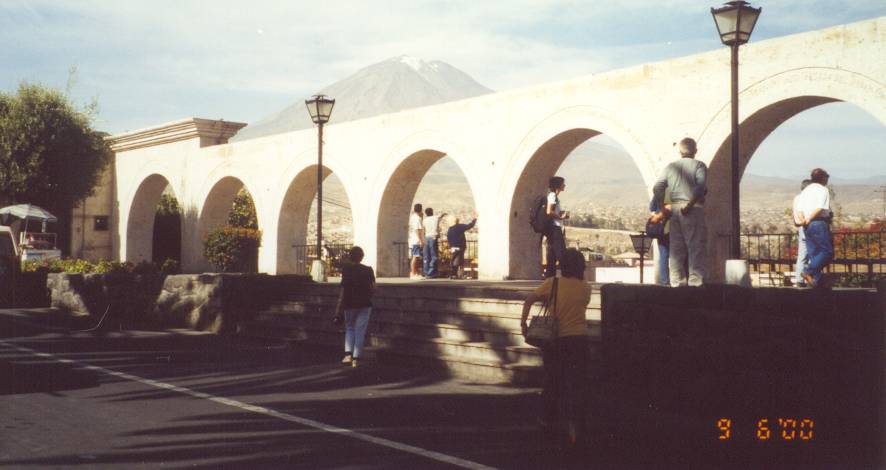 View of Misti Volcano from Yanahuara
View of Misti Volcano from Yanahuara